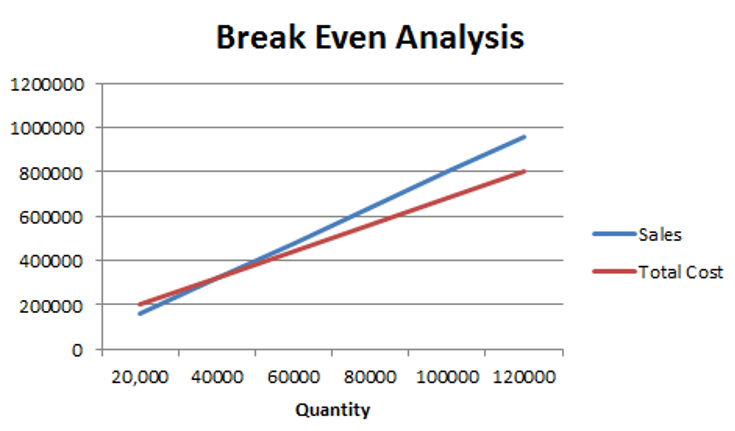Breakeven Analysis
For a firm, the breakeven point is the quantity of the sales required by the firm to cover its total cost, i.e., Total revenue = Total cost. At this quantity of sales the firm's net income is zero.
We know that:
F includes both fixed operating cost and fixed financing cost.
Breakeven quantity is the quantity where EBIT = 0. So, we solve for Q where EBIT = 0.
Example
Let's say we have the following data about a company:
Price per unit = $8
Variable costs = $6
Fixed operating costs = $20,000
Fixed financing costs = $60,000
The breakeven quantity will be calculated as follows:
The following graph summarizes the relationship between sales, costs, net income and net losses.

We can make the following observations from the above graph:
A firm with higher operating and financial leverage will have higher breakeven quantity.
Leverage magnifies the impact of change in sales on change in net income.
We can also modify the above formula to calculate the operating breakeven quantity:
In the above example, the operating breakeven quantity will be:
Related Downloads
Related Quizzes
Free Guides - Getting Started with R and Python
Enter your name and email address below and we will email you the guides for R programming and Python.

